Week 2 Lab
Andrew Beam, PhD
Department of Epidemiology
Harvard T.H. Chan School of Public Health

twitter: @AndrewLBeam
In class assignment:
PERCEPTRON BY HAND
PERCEPTRONS

Let's say we'd like to have a single neural learn a simple function
y
| X1 | X2 | y |
|---|---|---|
| 0 | 0 | 0 |
| 0 | 1 | 1 |
| 1 | 0 | 1 |
| 1 | 1 | 1 |
Observations
PERCEPTRONS

How do we make a prediction for each observations?
y
| X1 | X2 | y |
|---|---|---|
| 0 | 0 | 0 |
| 0 | 1 | 1 |
| 1 | 0 | 1 |
| 1 | 1 | 1 |
Assume we have the following values
| w1 | w2 | b |
|---|---|---|
| 1 | -1 | -0.5 |
Observations
Predictions

For the first observation:
Assume we have the following values
| w1 | w2 | b |
|---|---|---|
| 1 | -1 | -0.5 |
Predictions

For the first observation:
Assume we have the following values
| w1 | w2 | b |
|---|---|---|
| 1 | -1 | -0.5 |
First compute the weighted sum:
Predictions

For the first observation:
Assume we have the following values
| w1 | w2 | b |
|---|---|---|
| 1 | -1 | -0.5 |
First compute the weighted sum:
Transform to probability:
Predictions

For the first observation:
Assume we have the following values
| w1 | w2 | b |
|---|---|---|
| 1 | -1 | -0.5 |
First compute the weighted sum:
Transform to probability:
Round to get prediction:
Predictions

Putting it all together:
Assume we have the following values
| w1 | w2 | b |
|---|---|---|
| 1 | -1 | -0.5 |
| X1 | X2 | y | h | p | |
|---|---|---|---|---|---|
| 0 | 0 | 0 | -0.5 | 0.38 | 0 |
| 0 | 1 | 1 | -1.5 | 0.18 | 0 |
| 1 | 0 | 1 | 0.5 | .62 | 1 |
| 1 | 1 | 1 | -0.5 | 0.38 | 0 |
Fill out this table
Room for Improvement

Let's define how we want to measure the network's performance.
There are many ways, but let's use squared-error:
Room for Improvement

Let's define how we want to measure the network's performance.
There are many ways, but let's use squared-error:
Now we need to find values for that make this error as small as possible
The Backpropagation Algorithm

Our perceptron performs the following computations
And we want to minimize this quantity
The Backpropagation Algorithm

Our perception performs the following computations
And we want to minimize this quantity
We'll compute the gradients for each parameter by "back-propagating" errors through each component of the network
The Backpropagation Algorithm

For we need to compute
Computations
Loss
To get there, we will use the chain rule
This is "backprop"
The Backpropagation Algorithm

Let's break it into pieces
Computations
Loss
The Backpropagation Algorithm

Let's break it into pieces
Computations
Loss
The Backpropagation Algorithm

Let's break it into pieces
Computations
Loss
The Backpropagation Algorithm

Let's break it into pieces
Computations
Loss
The Backpropagation Algorithm

Let's break it into pieces
Computations
Loss
The Backpropagation Algorithm

Let's break it into pieces
Computations
Loss
The Backpropagation Algorithm

Let's break it into pieces
Computations
Loss
Putting it all together
Gradient Descent with Backprop

1) Compute the gradient for
2) Update
is the learning rate
For some number of iterations we will:
3) Repeat until "convergence"
Learning Rules for each Parameter

Gradient for
Gradient for
Gradient for
Update for
Update for
Update for
is the learning rate
IMPLEMENTATION IN PYTHON

GPUs

GPU COMPUTING
Training neural nets = large matrix multiplications
GPUs = Massively parallel linear algebra devices
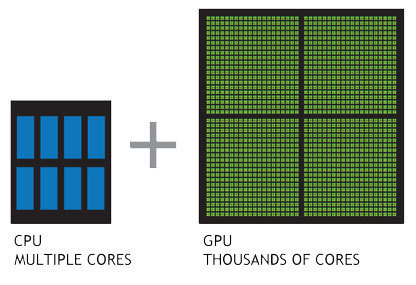

Special computer chips known as graphics processing units (GPUs) make training huge models on large data tractable

GPUs vs. CPUs


CPUs
1000s of number crunchers
GPUs
General
Purpose
Computation
REGULARIZATION

REGULARIZATION

One of the biggest problems with neural networks is overfitting.
Regularization schemes combat overfitting in a variety of different ways
WHY DO WE NEED IT?


WHY DO WE NEED IT?

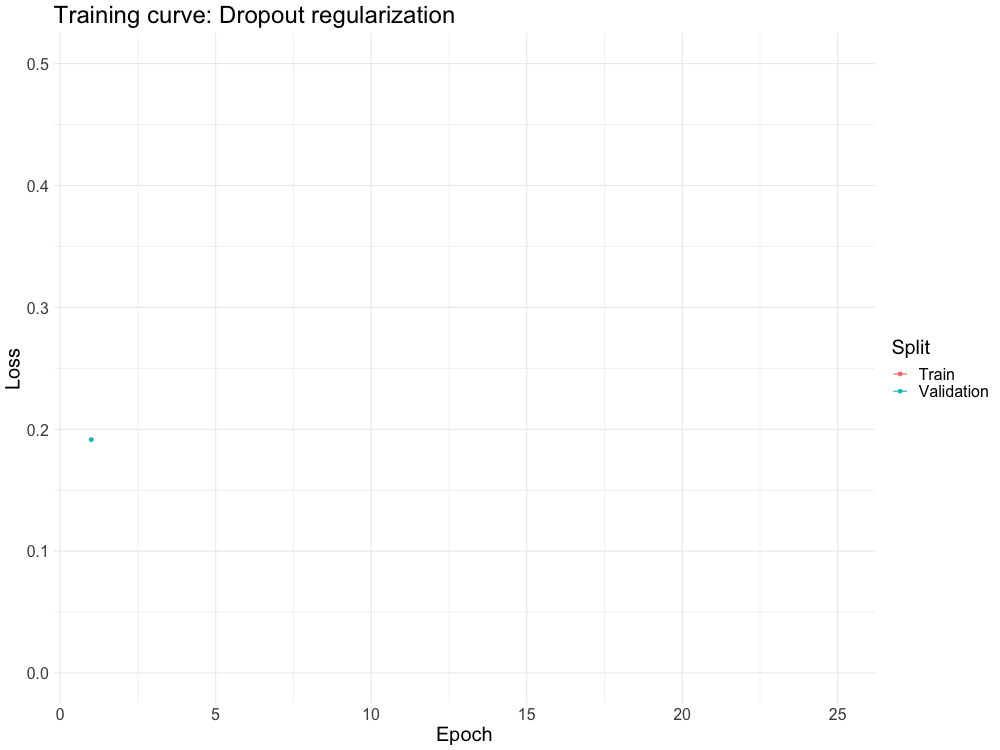
WHY DO WE NEED IT?



REGULARIZATION

Learning means solving the following optimization problem:
where f(X) = neural net output
REGULARIZATION

One way to regularize is introduce penalties and change
REGULARIZATION

to
One way to regularize is introduce penalties and change
REGULARIZATION

A familiar why to regularize is introduce penalties and change
to
where R(W) is often the L1 or L2 norm of W. These are the well known ridge and LASSO penalties, referred to as weight decay by neural net community
L2 REGULARIZATION

We can limit the size of the L2 norm of the weight vector:
where
L1/L2 REGULARIZATION

We can limit the size of the L2 norm of the weight vector:
where
We can do the same for the L1 norm. What do these penalties do?
SHRINKAGE

L1 and L2 penalties shrink the weights towards 0
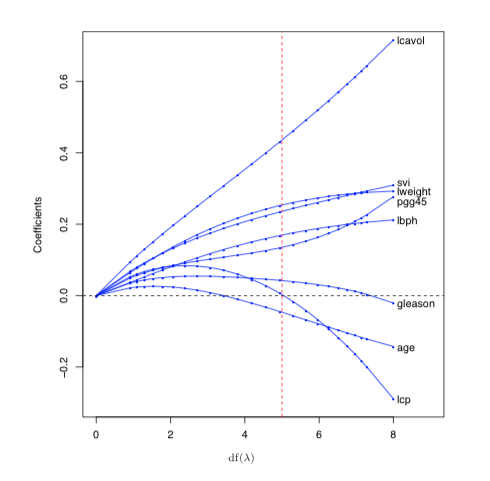
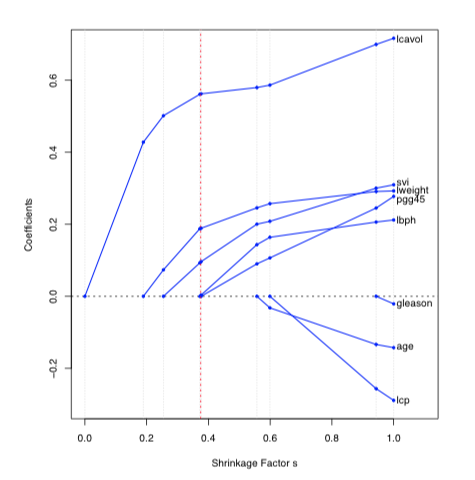
L2 Penalty
L1 Penalty
Friedman, Jerome, Trevor Hastie, and Robert Tibshirani. The elements of statistical learning. Vol. 1. New York: Springer series in statistics, 2001.
SHRINKAGE

L1 and L2 penalties shrink the weights towards 0
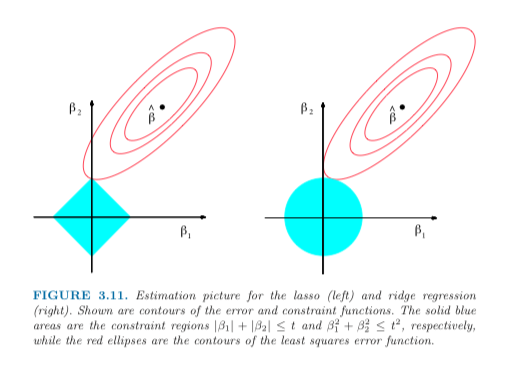
Friedman, Jerome, Trevor Hastie, and Robert Tibshirani. The elements of statistical learning. Vol. 1. New York: Springer series in statistics, 2001.
SHRINKAGE

L1 and L2 penalties shrink the weights towards 0

Friedman, Jerome, Trevor Hastie, and Robert Tibshirani. The elements of statistical learning. Vol. 1. New York: Springer series in statistics, 2001.
Why is this a "good" idea?
STOCHASTIC REGULARIZATION

Often, we will inject noise into the neural network during training. By far the most popular way to do this is dropout
STOCHASTIC REGULARIZATION

Often, we will inject noise into the neural network during training. By far the most popular way to do this is dropout
Given a hidden layer, we are going to set each element of the hidden layer to 0 with probability p each SGD update.

STOCHASTIC REGULARIZATION

One way to think of this is the network is trained by bagged versions of the network. Bagging reduces variance.
STOCHASTIC REGULARIZATION

One way to think of this is the network is trained by bagged versions of the network. Bagging reduces variance.
Others have argued this is an approximate Bayesian model

STOCHASTIC REGULARIZATION

Many have argued that SGD itself provides regularization
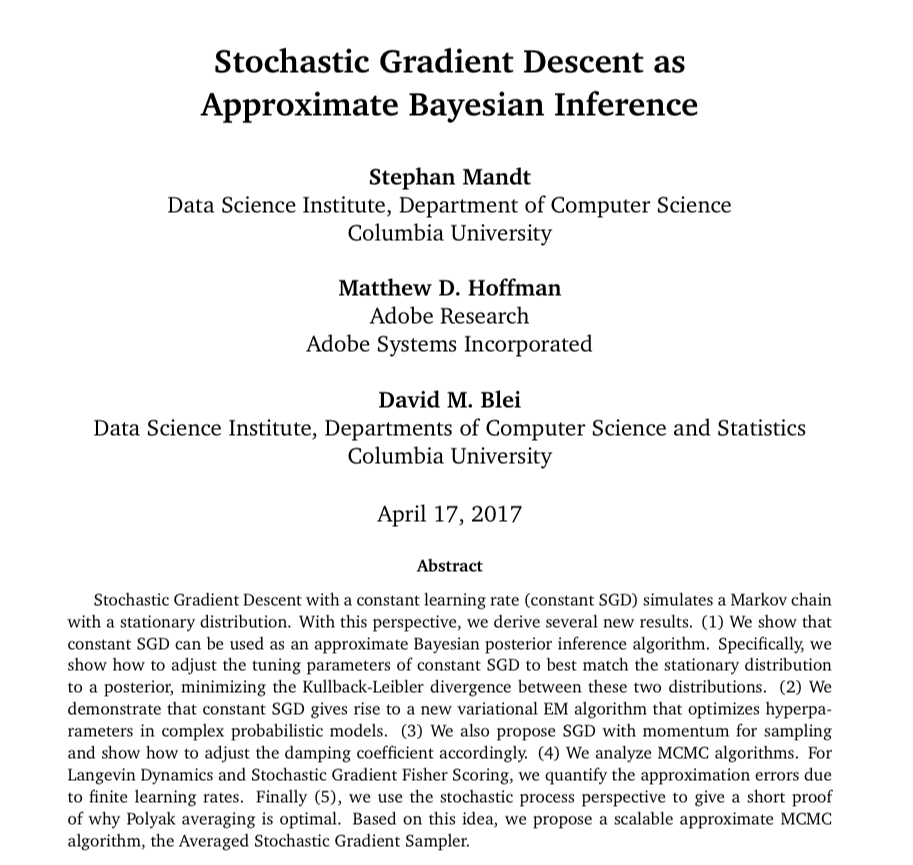
INITIALIZATION REGULARIZATION

The weights in a neural network are given random values initially
INITIALIZATION REGULARIZATION

The weights in a neural network are given random values initially
There is an entire literature on the best way to do this initialization
INITIALIZATION REGULARIZATION

The weights in a neural network are given random values initially
There is an entire literature on the best way to do this initialization
- Normal
- Truncated Normal
- Uniform
- Orthogonal
- Scaled by number of connections
- etc
INITIALIZATION REGULARIZATION

Try to "bias" the model into initial configurations that are easier to train
INITIALIZATION REGULARIZATION

Try to "bias" the model into initial configurations that are easier to train
Very popular way is to do transfer learning
INITIALIZATION REGULARIZATION

Try to "bias" the model into initial configurations that are easier to train
Very popular way is to do transfer learning
Train model on auxiliary task where lots of data is available
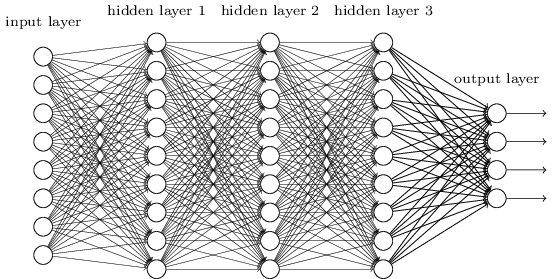
INITIALIZATION REGULARIZATION

Try to "bias" the model into initial configurations that are easier to train
Very popular way is to do transfer learning
Train model on auxiliary task where lots of data is available

Use final weight values from previous task as initial values and "fine tune" on primary task

STRUCTURAL REGULARIZATION

However, the key advantage of neural nets is the ability to easily include properties of the data directly into the model through the network's structure
Convolutional neural networks (CNNs) are a prime example of this (Kun will discuss CNNs)
BONUS: BACKPROP FOR MLPs

Perceptron -> MLP

With a small change, we can turn our perceptron model into a multilayer perceptron
- Instead of just one linear combination, we are going to take several, each with a different set of weights (called a hidden unit)
- Each linear combination will be followed by a nonlinear activation
- Each of these nonlinear features will be fed into the logistic regression classifier
- All of the weights are learned end-to-end via SGD
MLPs learn a set of nonlinear features directly from data
"Feature learning" is the hallmark of deep learning approachs
MULTILAYER PERCEPTRONS (MLPs)

Let's set up the following MLP with 1 hidden layer that has 3 hidden units:
Each neuron in the hidden layer is going to do exactly the same thing as before.
MULTILAYER PERCEPTRONS (MLPs)

Computations are:
MULTILAYER PERCEPTRONS (MLPs)

Computations are:
Output layer weight derivatives
MULTILAYER PERCEPTRONS (MLPs)

Computations are:
Output layer weight derivatives
MULTILAYER PERCEPTRONS (MLPs)

Computations are:
Hidden layer weight derivatives
Output layer weight derivatives
MULTILAYER PERCEPTRONS (MLPs)

Computations are:
Hidden layer weight derivatives
Output layer weight derivatives
(if we use a sigmoid activation function)
MLP Terminology


Forward pass = computing probability from input
MLP Terminology

Forward pass = computing probability from input
MLP Terminology
Backward pass = computing derivatives from output

Forward pass = computing probability from input
MLP Terminology
Backward pass = computing derivatives from output
Hidden layers are often called "dense" layers
BMI 707 / EPI 290: Week 2 Lab
By beamandrew
BMI 707 / EPI 290: Week 2 Lab
- 2,559
